Vintage 1963 250 GT Ferrari: part 2 paint correction
Part 2,
After the wheels were perfected and more importantly preserved for the cash and historical value, it was time to turn the attention to the paint work. The paint was a newer repaint done in Italy, and while not original the cost of a repaint done by Ferrari is not cheap. I was to preserve this paint more for its cash value than anything else. The shape of the paint was rough by any normal standard, but for a vintage Ferrari this was flogged on a pole by previous owners (who likely didn’t know the details of detailing). I would venture to say Detailed Image readers are much more aware of the details than the previous owners of this car. It is rumored that a famous Hollywood actor owned this car before my client, so that makes our DI readers smarter than Hollywood…oh wait bad comparison…you all are detailing prodigies or detailing savants in comparison! Am I back in your good graces?
Now I’ve polished many cars over the years, and after you get working on the paint you really just focus on the paint and how it’s reacting to your techniques and polishes. With this car the thought of preservation never left my mind; and I worked methodically and scientifically over the paint, working one panel at a time, evaluating and adjusting. Some previous articles here on DI have spoken to the idea that professional detailers don’t have a system they follow, they are adjusting, tweaking, and refining what they do during the detail. We have a game plan for sure, but closely watching our techniques and choices is why we get outstanding results. This paint was a joy to work with, a touch of hardness but supple enough to respond nicely. Yes we have naughty paints that fight us the entire time, but this was not one of them. The thickness of this paint was not a lot, but enough to do what the client wanted and still have some left for good measure.
Again my ability to photographically document this cars process was not my focus. Many of the photos are just quick and lack artful reason, almost like the late 1800′s self portraits, you know the ones where no one smiles and they are all dressed in black!
The assessment of the paint:
Like I’ve said, this is what I normally have to deal with on most cars…on an exotic Ferrari we classify this as flogged paint. A “trailer queen” and historically significant auto such as this is usually much more pampered, again likely from an owner that meant well but lacked the finite details of paint care.
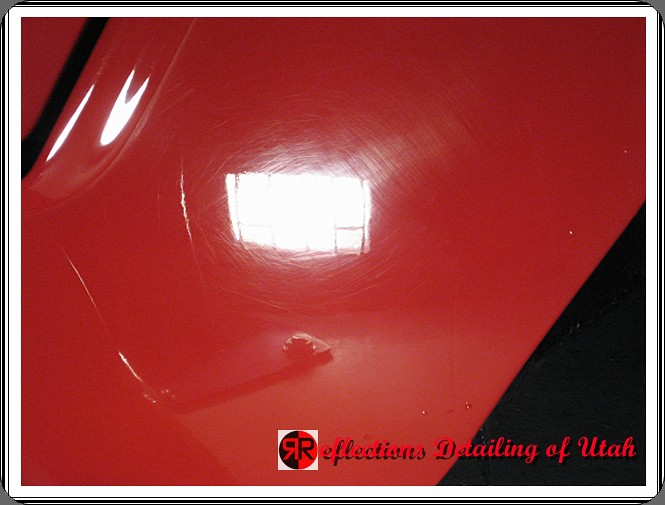
More of the same, some deeper scratches likely due to poor washing and drying techniques.
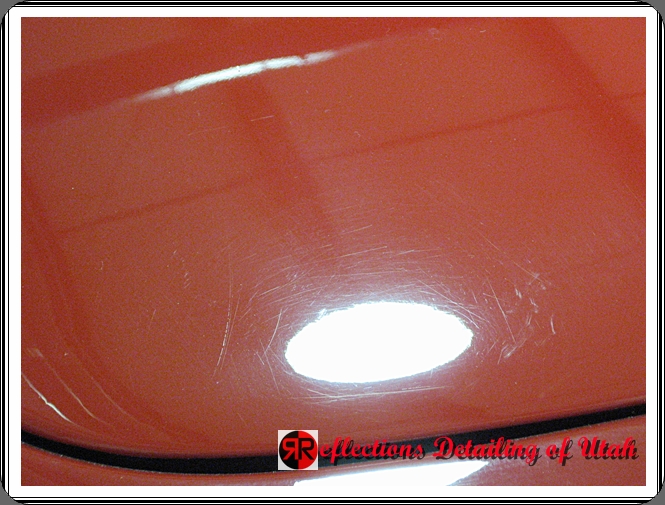
The rear trunk lid was hammered, like a pack of wild dogs were raising puppies on the lid. You can clearly see the halo spiderweb effect around the reflection of the HPS light on the paint.
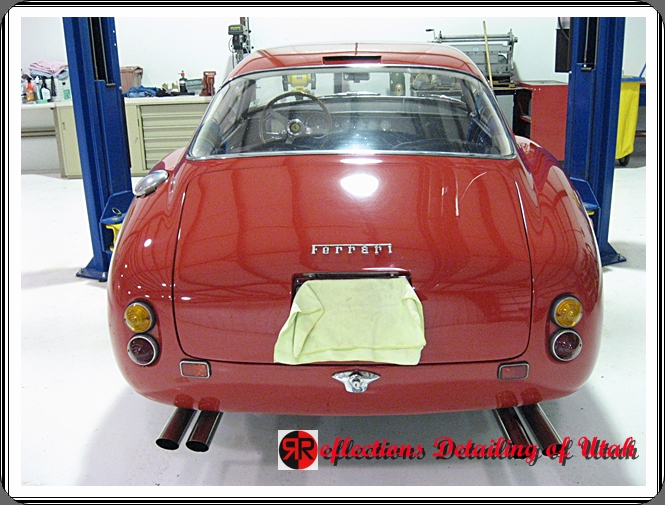
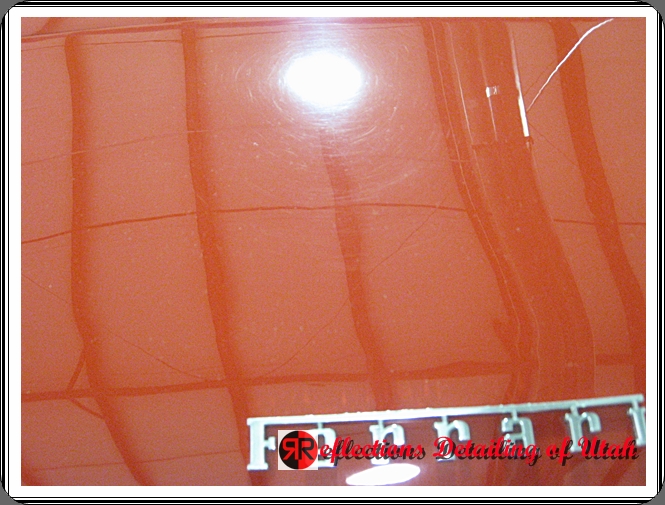
The owner spotted this blemish as he saw how it was created. The transport company was trying to move the vehicle and couldn’t get it done quick enough so he put his hip on the car and pushed! He hip checked a rare exotic Ferrari, I think NOT! I think my client freaked out on the guy just a bit. Notice the hazy reflections around the light source. You would think a transport company caring for a multi million dollar car, would give it the white glove treatment.
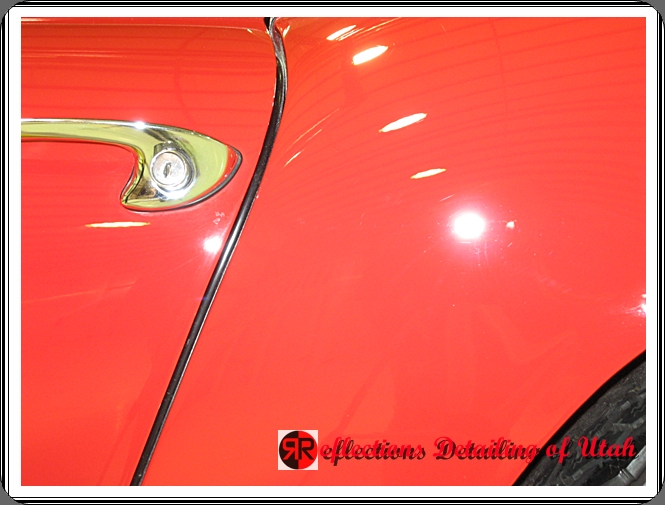
Here is test spot of that same area, while I’m not completely done…the haziness is mainly gone.
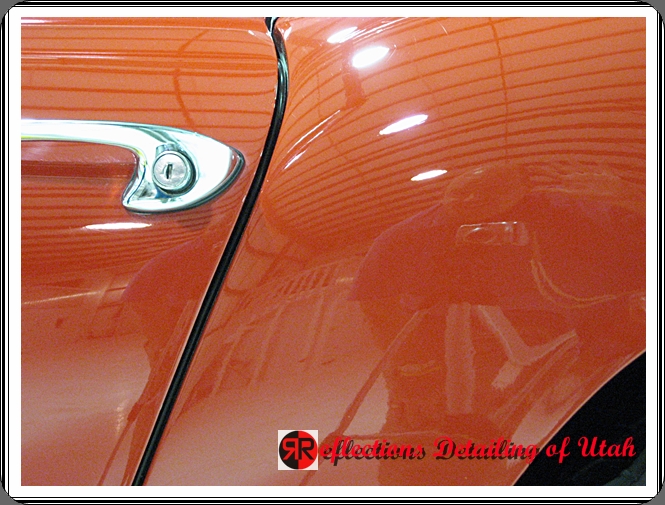
Polishing started with Menzerna SIP 3.02, rotary, and lake country purple foamed wool. Menzerna polishes are diminishing abrasive polishes. The mechanical action breaks down the media into finer and finer bits, thus creating an improved finish towards the end of the break down. The PFW is a great wool pad, and likely my most favorite wool pad. It doesn’t have the hardcore cutting power of say a twisted wool, but its finish is sublime! Its a perfect intermediate cutting pad that finishes really well. By changing the pressure during the compounding stage you can bring the gloss up at that same time as you correct. PFW is not a fool proof pad, it’s one that takes some time to understand how it behaves, but not impossible to learn…if you are leveling paint you need patience anyhow!
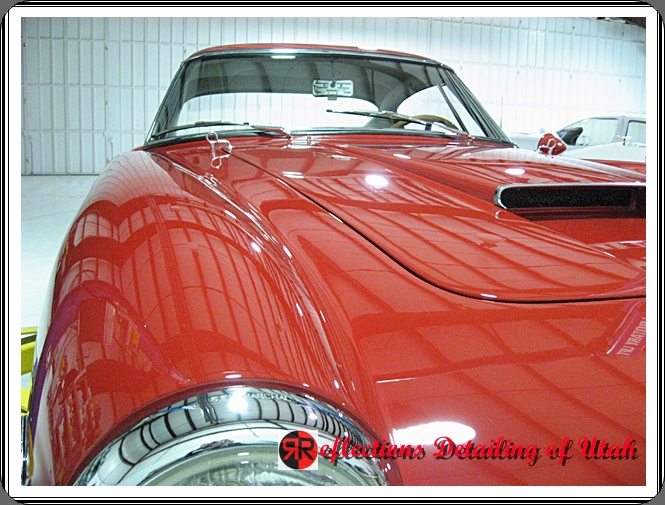
You can see the deep marring is cleared up, but the crispness of the reflection of the light source still needs more refined polishings. This photo is taken in the same general area as the 2nd photo in the article.
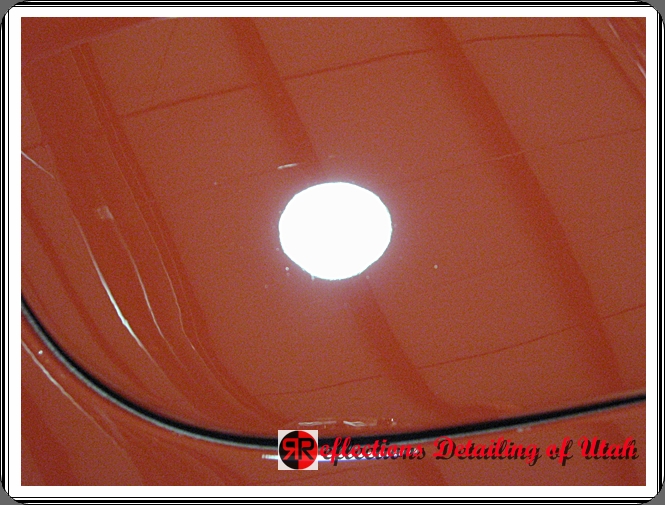
Refined polishing was done with Menzerna 106fa, rotary, and lake country white or black foam. 106fa and 106ff are slightly different polishes, like step children to each other…half the same DNA as the other. I have found over the years of using 106fa that I like it better on Ferrari paints, working times are increased and the finish is a tad glossier. This seems to hold true for other paint types too, not just for Ferrari. The lake country pads are a perfect combo for the 106fa.
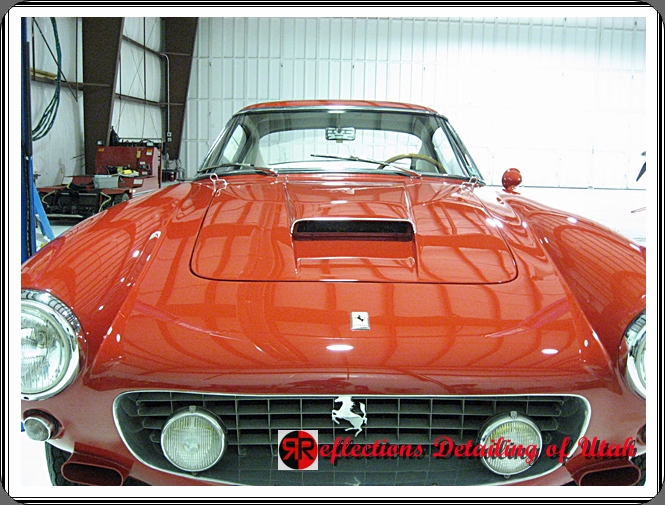
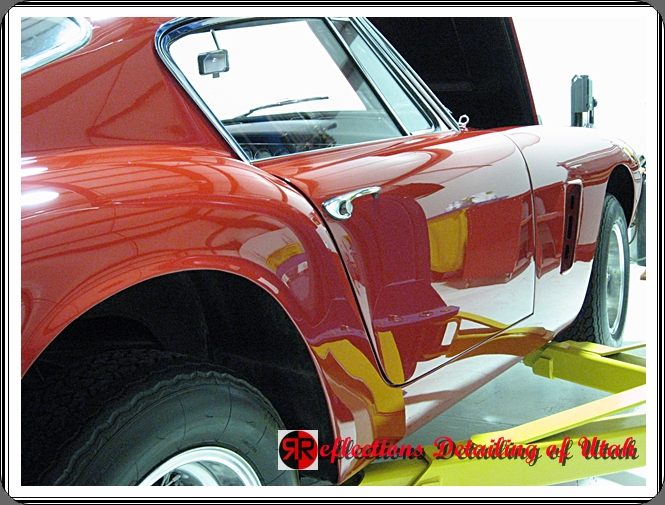

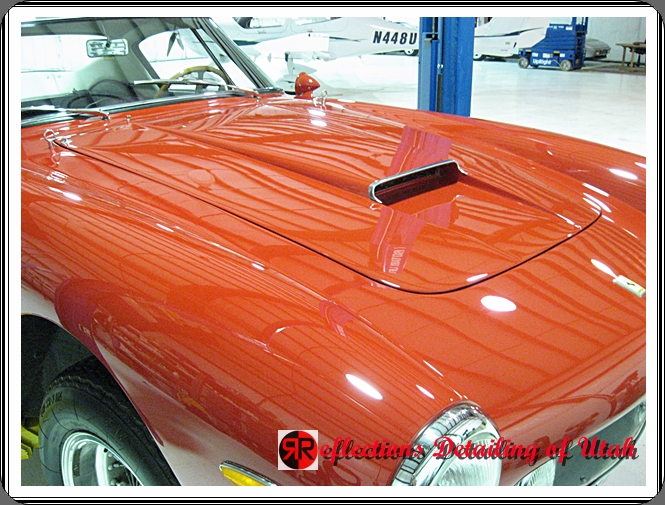
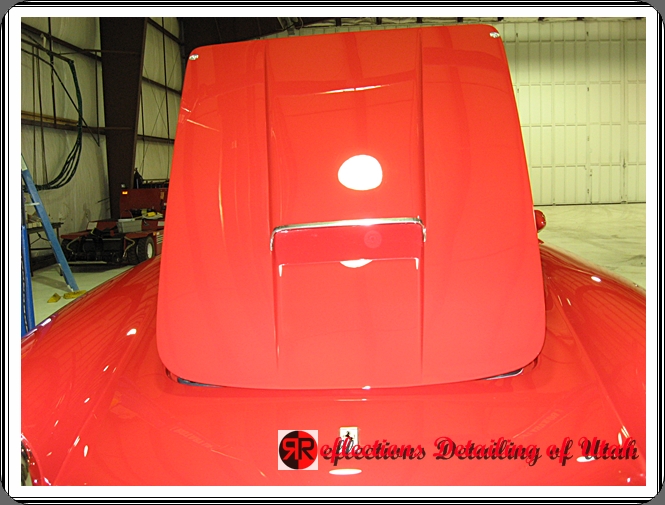
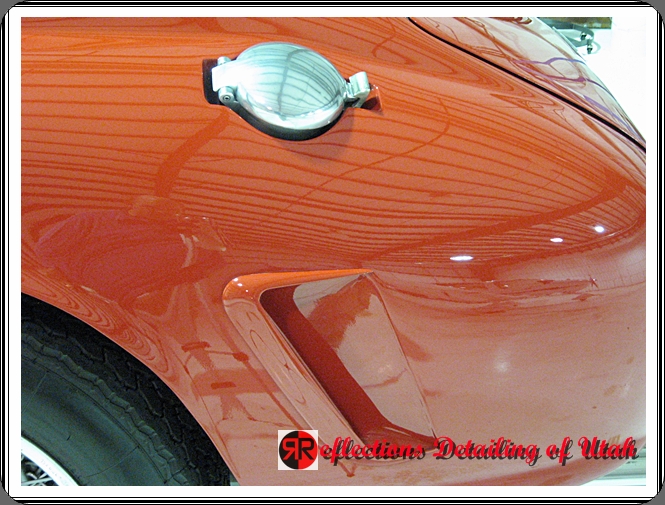
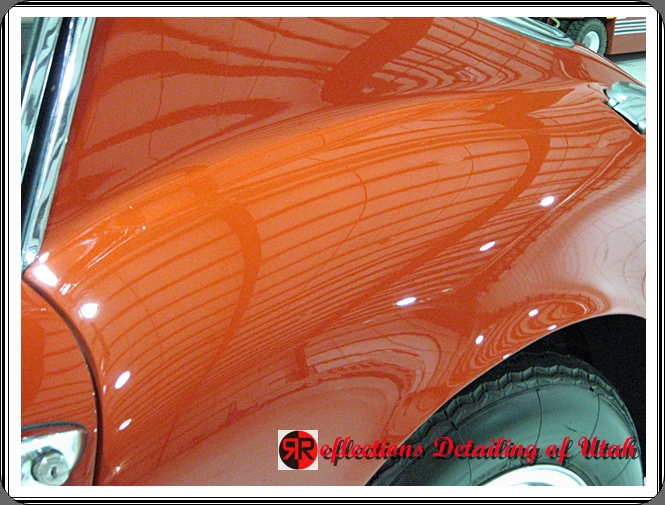
LSP of choice is a mystery, because I don’t recall. Either way the appearance of the car is because of polishing and defect removal, not so much the wax or sealant used. Paint polishing and corrective measures are the plastic surgery of the process, the LSP is the lip gloss.
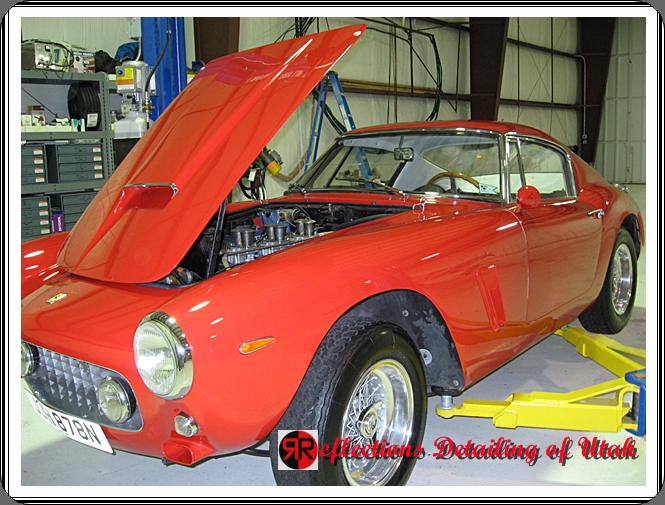
The client was thrilled, the car caught the shine of its glory, and I was mentally tired as well as physically drained. Mission accomplished!
The next part in the series just might be the 3 hrs I spent cleaning the under carriage……..
For all the playboy readers……thanks for “looking”!
Cheers,
GREG




